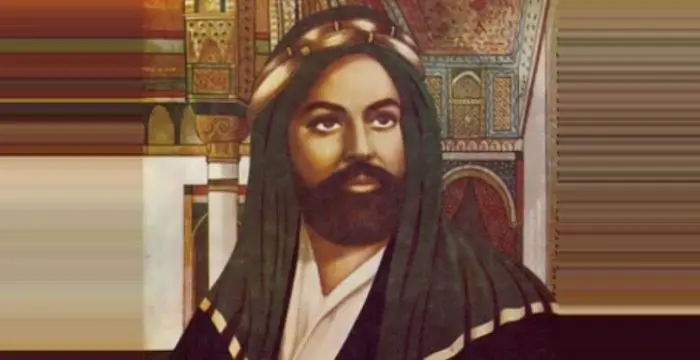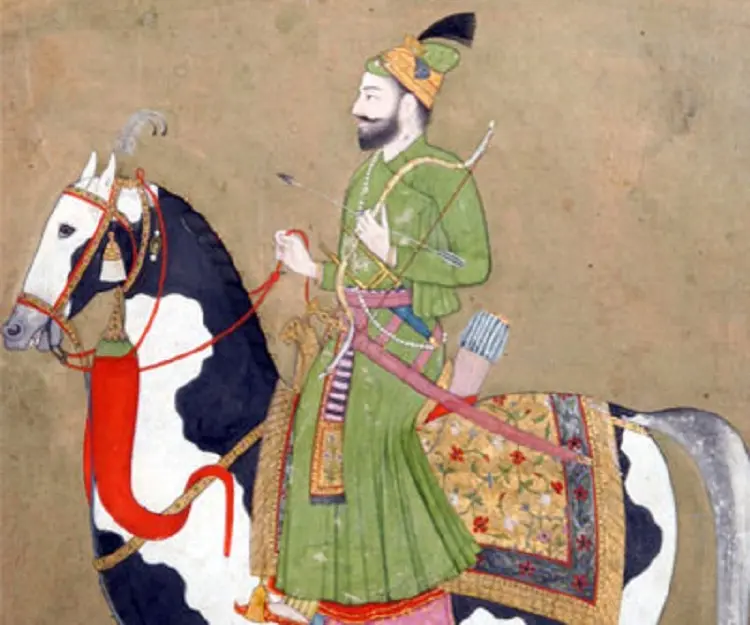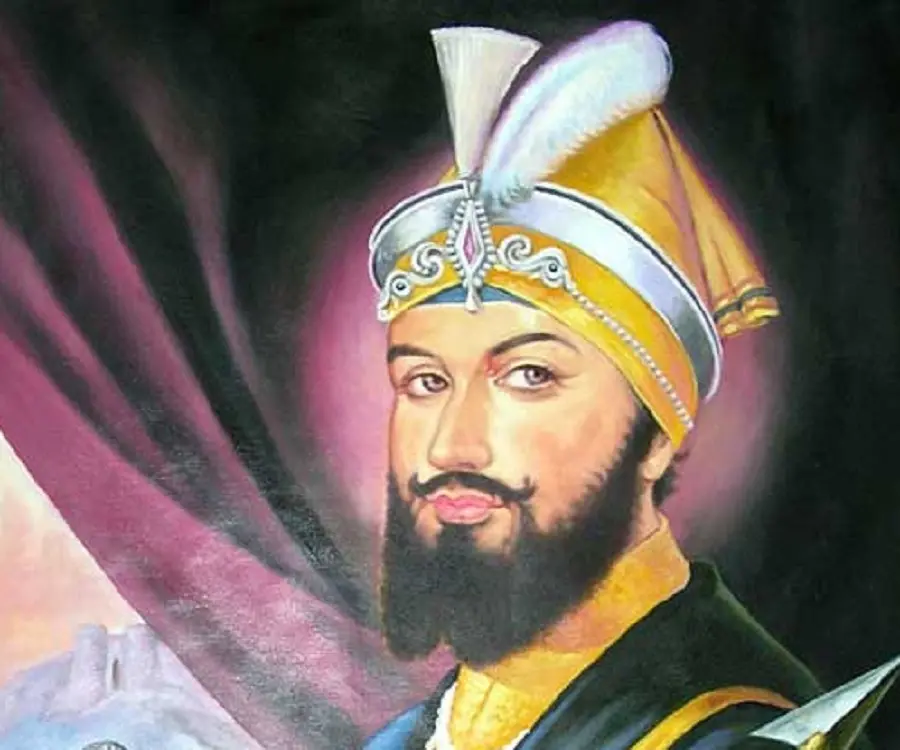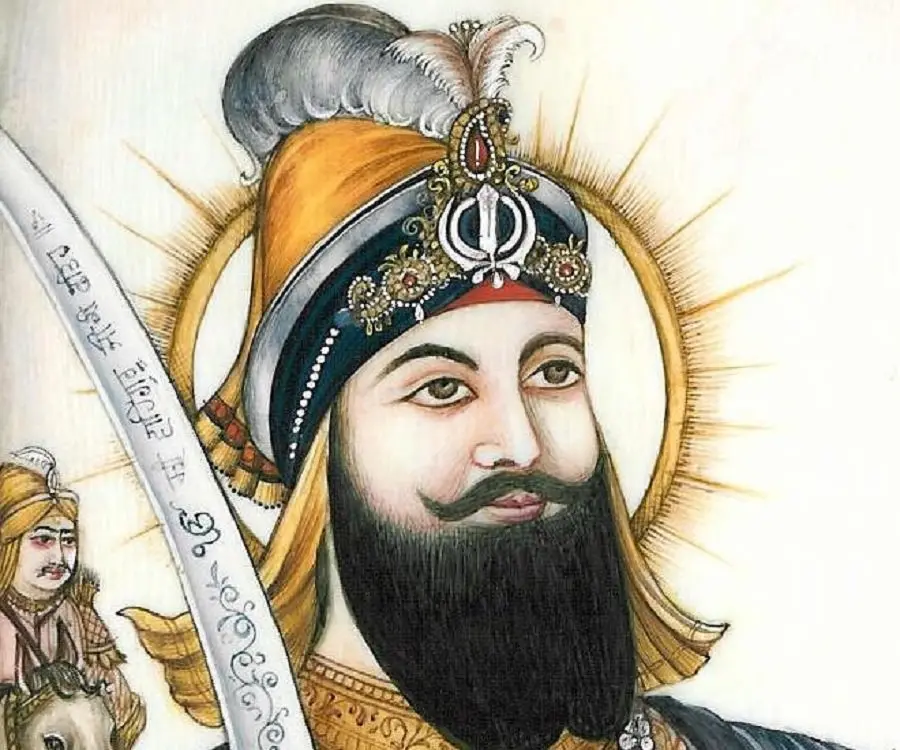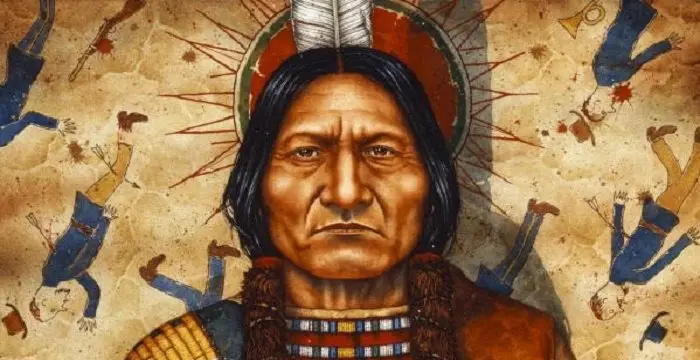Guru Gobind Singh - Religious Leaders, Facts and Facts
Guru Gobind Singh's Personal Details
Guru Gobind Singh was the last of the ten Sikh Gurus
| Information | Detail |
|---|---|
| Birthday | December 22, 1666 |
| Died on | October 7, 1708 |
| Nationality | Indian |
| Famous | Historical Personalities, Spiritual & Religious Leaders, Religious Leaders, Spiritual, Warrior |
| Spouses | Mata Jito, Mata Sahib Kaur |
| Known as | Gobind Rai |
| Childrens | Ajit Singh, Fateh Singh, Jujhar Singh, Zorawar Singh |
| Cause of death |
|
| Birth Place | Patna |
| Religion | Sikhism |
| Gender | Male |
| Father | Guru Tegh Bahadur |
| Mother | Mata Gujri |
| Sun Sign | Sagittarius |
| Born in | Patna |
| Famous as | Warrior |
| Died at Age | 41 |
// Famous Religious Leaders
Prophet Muhammad
Prophet Muhammad was the founder of Islam, one of the most widespread religions in the world. This biography profiles his childhood, life story, achievements and more.
Murad IV
Murad IV was one of the mighty Sultans in the history of the Ottoman Empire. This biography profiles his childhood, family, accession, rule, administration and timeline.
Eckhart Tolle
Eckhart Tolle is a well-known spiritual leader, and author. Check out this biography to know about his childhood, family, personal life, spiritual awakening, etc.
Guru Gobind Singh's photo
Who is Guru Gobind Singh?
Guru Gobind Singh was the last of the ten Sikh Gurus. A spiritual master, warrior and a philosopher, he was the only son of the ninth Sikh Guru Tegh Bahadur who was executed by the Mughal Emperor Aurangzeb. Aged just nine at the time of his father’s death, he succeeded him as the leader of the Sikhs at this tender age. The events surrounding the torture and execution of his father affected the young boy deeply. Becoming the guru at such a young age placed immense responsibilities on his young shoulders which he fulfilled with a maturity uncommon for someone who was still a child. The tensions between the Mughals and the Sikhs continued even after the death of Guru Tegh Bahadur and the Sikhs were called on again and again to fight Aurangzeb's forces in order to protect the people from religious persecution. Gobind Singh was a very brave warrior who motivated his followers to fight and lay down their lives to protect themselves and others from injustice and tyranny. He is also credited with the founding of the Khalsa and the introduction of the concept of the Five Ks to Sikhism. He dictated the Guru Granth Sahib to Bhai Mani Singh and at the time of his death, passed the mantle of the Guruship to the holy text
// Famous Spiritual
Prophet Muhammad
Prophet Muhammad was the founder of Islam, one of the most widespread religions in the world. This biography profiles his childhood, life story, achievements and more.
Murad IV
Murad IV was one of the mighty Sultans in the history of the Ottoman Empire. This biography profiles his childhood, family, accession, rule, administration and timeline.
Eckhart Tolle
Eckhart Tolle is a well-known spiritual leader, and author. Check out this biography to know about his childhood, family, personal life, spiritual awakening, etc.
Childhood & Early Life
Guru Gobind Singh was born on 22 December 1666 in Patna, India, to Guru Tegh Bahadur and his wife Gujri. Named Gobind Rai at birth, he was the couple’s only child. His father was the 9th Guru of Sikhs and was on a preaching tour in Assam at the time of Gobind Rai’s birth.
His father toured frequently so he left his family under the protection of the local Raja. In 1670, Tegh Bahadur went to Chak Nanki (Anandpur) and called for his family to join him.
In 1671, Gobind Rai journeyed with his family through Danapur and started receiving his basic education on the journey itself. He learnt Persian, Sanskrit and martial skills. He and his mother finally joined his father in Anandpur in 1672 where his education continued.
In early 1675, a group of Kashmiri Hindus who were being forcibly converted to Islam at sword point by the Mughals came to Anandpur in desperation and sought Guru Tegh Bahadur's intervention. On learning of the plight of the Hindus, Guru Tegh Bahadur proceeded to the capital, Delhi. Before leaving, he appointed his nine year old son Gobind Rai to be his successor and tenth guru of the Sikhs.
Guru Tegh Bahadur was arrested and imprisoned by the Mughal officers. He was told to convert to Islam, and on his refusal, was subjected to unspeakable atrocities and torture. The Guru, who chose to face all the tortures instead of converting, was then publically executed.
Later Life
Gobind Rai was formally made the Guru on the Baisakhi day (the annual harvesting festival) in 1676. He was a very intelligent and brave boy who in spite of the great tragedy he had just suffered assumed, the responsibility of Guruship with prudence and maturity.
Keeping in view the strained relations with the Mughals, he focused on creating a strong army of dedicated warriors who would happily sacrifice their lives while fighting for the noble cause of protecting the dignity of all humanity.
He requested all the followers of Sikhism to congregate at Anandpur on 13 April 1699, the day of Baisakhi. At the congregation, he made a mixture of water and Patashas (Punjabi sweeteners) and called this sweetened water “Amrit” (“nectar”).
He then asked for volunteers who were willing to sacrifice their lives for the Guru. Five men volunteered, and he administered the “Amrit” to these five men and designated them collectively as the Khalsa, the body of baptized Sikhs, and gave them the last name “Singh”. He also took the Amrit himself and became a baptized Sikh, adopting the name “Gobind Singh”. Several other men and women were also initiated into Sikhism.
Guru Gobind Singh then established the Five Ks, the five Articles of Faith that identify baptized Khalsa Sikhs. These five symbols were: Kesh: uncut hair, Kangha: a wooden comb, Kara: a metal bracelet, Kachera: a specific style of cotton undergarments, and Kirpan: a strapped curved sword.
After the founding of the Khalsa order, Guru Gobind Singh and his Sikh warriors fought a series of major battles against the Mughal forces. The Battle of Bhangani, Battle of Nadaun, Battle of Guler, Battle of Nirmohgarh, Battle of Basoli, Battle of Anandpur, and Battle of Muktsar were among the battles he fought.
Many brave Sikh soldiers, including the Guru’s two eldest sons lost their lives in the battles. His younger sons were captured by the Mughal forces and forced to convert to Islam. The young boys refused and were bricked alive inside a wall and killed. Guru Gobind Singh continued fighting bravely in spite of the tragic loss of his sons.
The battles between the Sikhs and the Mughals continued for as long as the Mughal Emperor Aurangzeb reigned. Aurangzeb died in 1707 and his son Bahadur Shah became the emperor. Bahadur Shah respected Guru Gobind Singh and used to attend his discourses. However, Wazir Khan, the Nawab of Sirhind, did not like the friendly relations between the emperor and the Guru and hatched a plan to assassinate Guru Gobind Singh.
Major Works
Guru Gobind Singh founded the Khalsa, the collective body of all initiated Sikhs responsible for all executive, military and civil authority in the Sikh society, and established the Five K's of Sikhism which gives Sikhs their religious identity.
He completed the composition of the Guru Granth Sahib, which is a collection of hymns (Shabad) or Baani describing the qualities of God. The Granth contains the teachings of the ten Sikh Gurus and is regarded the holy scripture of the Sikhs. Guru Gobind Singh affirmed the sacred text as his successor and passed on the spiritual leadership to the holy text.
Personal Life & Legacy
There are different views regarding his marital life. Some historians believe that he had one wife, Mata Jito who later changed her name to Mata Sundari, while other sources state that he was married thrice, his three wives being Mata Jito, Mata Sundari, and Sahib Devi. He had four sons: Ajit Singh, Jujhar Singh, Zorawar Singh and Fateh Singh.
In 1708, Wazir Khan, the Nawab of Sirhind, sent two Pathans, Jamshed Khan and Wasil Beg, to assassinate the Guru. Jamshed Khan stabbed the Guru below the heart. The wound was treated by a European surgeon, but it reopened a few days later and started bleeding profusely. Guru Gobind Singh sensed that his end was near and proclaimed the Guru Granth Sahib as his successor. He died on 7 October 1708 at Nanded.
// Famous Warrior
Sitting Bull
Sitting Bull was a Teton Dakota Indian chief who led Sioux tribes in their struggle for survival on the North American Great Plains.
Miyamoto Musashi
Miyamoto Musashi was a 16th century Japanese samurai, and author of the classic strategy text ‘The Book of Five Rings’.
Guru Gobind Singh biography timelines
- // 22nd Dec 1666Guru Gobind Singh was born on 22 December 1666 in Patna, India, to Guru Tegh Bahadur and his wife Gujri. Named Gobind Rai at birth, he was the couple’s only child. His father was the 9th Guru of Sikhs and was on a preaching tour in Assam at the time of Gobind Rai’s birth.
- // 1670His father toured frequently so he left his family under the protection of the local Raja. In 1670, Tegh Bahadur went to Chak Nanki (Anandpur) and called for his family to join him.
- // 1671 To 1672In 1671, Gobind Rai journeyed with his family through Danapur and started receiving his basic education on the journey itself. He learnt Persian, Sanskrit and martial skills. He and his mother finally joined his father in Anandpur in 1672 where his education continued.
- // 1675In early 1675, a group of Kashmiri Hindus who were being forcibly converted to Islam at sword point by the Mughals came to Anandpur in desperation and sought Guru Tegh Bahadur's intervention. On learning of the plight of the Hindus, Guru Tegh Bahadur proceeded to the capital, Delhi. Before leaving, he appointed his nine year old son Gobind Rai to be his successor and tenth guru of the Sikhs.
- // 1676Gobind Rai was formally made the Guru on the Baisakhi day (the annual harvesting festival) in 1676. He was a very intelligent and brave boy who in spite of the great tragedy he had just suffered assumed, the responsibility of Guruship with prudence and maturity.
- // 13th Apr 1699He requested all the followers of Sikhism to congregate at Anandpur on 13 April 1699, the day of Baisakhi. At the congregation, he made a mixture of water and Patashas (Punjabi sweeteners) and called this sweetened water “Amrit” (“nectar”).
- // 1707The battles between the Sikhs and the Mughals continued for as long as the Mughal Emperor Aurangzeb reigned. Aurangzeb died in 1707 and his son Bahadur Shah became the emperor. Bahadur Shah respected Guru Gobind Singh and used to attend his discourses. However, Wazir Khan, the Nawab of Sirhind, did not like the friendly relations between the emperor and the Guru and hatched a plan to assassinate Guru Gobind Singh.
- // 7th Oct 1708In 1708, Wazir Khan, the Nawab of Sirhind, sent two Pathans, Jamshed Khan and Wasil Beg, to assassinate the Guru. Jamshed Khan stabbed the Guru below the heart. The wound was treated by a European surgeon, but it reopened a few days later and started bleeding profusely. Guru Gobind Singh sensed that his end was near and proclaimed the Guru Granth Sahib as his successor. He died on 7 October 1708 at Nanded.
// Famous Spiritual & Religious Leaders
Swami Vivekananda
Swami Vivekananda was the chief disciple of Sri Ramakrishna, and was responsible for awakening India spiritually. Check this biography to know in detail about his life, profile and timeline.
Prophet Muhammad
Prophet Muhammad was the founder of Islam, one of the most widespread religions in the world. This biography profiles his childhood, life story, achievements and more.
Murad IV
Murad IV was one of the mighty Sultans in the history of the Ottoman Empire. This biography profiles his childhood, family, accession, rule, administration and timeline.
Eckhart Tolle
Eckhart Tolle is a well-known spiritual leader, and author. Check out this biography to know about his childhood, family, personal life, spiritual awakening, etc.
Russell M. Nelson
Russell M. Nelson is an American religious leader, author, and philanthropist. Check out this biography to know about his birthday, childhood, family life, achievements and fun facts about him.
Gautama Buddha
Gautama Buddha was a spiritual leader on whose teachings Buddhism was founded. This biography of Gautama Buddha provides detailed information about his childhood, life, achievements, works & timeline
Guru Gobind Singh's FAQ
What is Guru Gobind Singh birthday?
Guru Gobind Singh was born at 1666-12-22
When was Guru Gobind Singh died?
Guru Gobind Singh was died at 1708-10-07
Where was Guru Gobind Singh died?
Guru Gobind Singh was died in Nanded
Which age was Guru Gobind Singh died?
Guru Gobind Singh was died at age 41
Where is Guru Gobind Singh's birth place?
Guru Gobind Singh was born in Patna
What is Guru Gobind Singh nationalities?
Guru Gobind Singh's nationalities is Indian
Who is Guru Gobind Singh spouses?
Guru Gobind Singh's spouses is Mata Jito, Mata Sahib Kaur
Who is Guru Gobind Singh childrens?
Guru Gobind Singh's childrens is Ajit Singh, Fateh Singh, Jujhar Singh, Zorawar Singh
What is Guru Gobind Singh's cause of dead?
Guru Gobind Singh dead because of Assassination
What is Guru Gobind Singh's religion?
Guru Gobind Singh's religion is Sikhism
Who is Guru Gobind Singh's father?
Guru Gobind Singh's father is Guru Tegh Bahadur
Who is Guru Gobind Singh's mother?
Guru Gobind Singh's mother is Mata Gujri
What is Guru Gobind Singh's sun sign?
Guru Gobind Singh is Sagittarius
How famous is Guru Gobind Singh?
Guru Gobind Singh is famouse as Warrior
